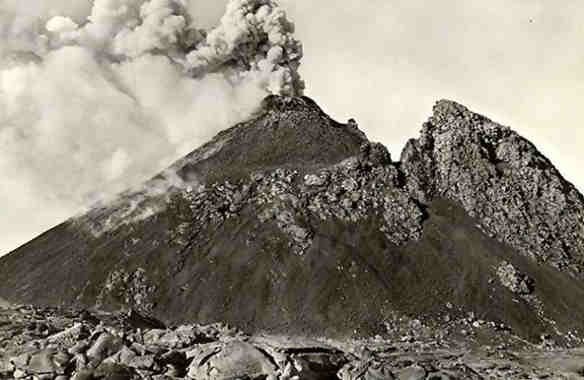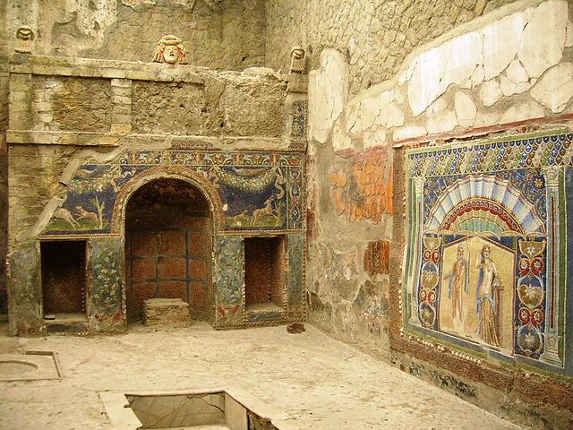
Il Vesuvio è uno dei vulcani italiani più conosciuti al mondo. E per delle ottime ragioni.
Mount Vesuvius is one of the most known Italian volcanoes in the world. And for some very good reasons.
L’eruzione del Vesuvio del 79 d.C. distrusse diverse città, le più famose delle quali sono Pompei ed Ercolano, e lasciò dietro di sé molti corpi e molte rovine.
The eruption of Mount Vesuvius in AD 79, destroyed several towns, the most famous being Pompeii and Herculaneum, and left many ruins and bodies behind.
Il Vesuvio ha eruttato molte volte dal 79 d.C. e oggigiorno è l’unico vulcano in Europa ad aver eruttato negli ultimi 100 anni.
Mount Vesuvius erupted many times since AD 79 and nowadays it’s the only volcano in Europe that has erupted in the last 100 years.
Il Vesuvio è considerato uno dei vulcani più pericolosi. La ragione è semplice. Ci sono circa 3.000.000 di persone che vivono alle sue pendici e che sarebbero in serio pericolo se il Vesuvio decidesse di eruttare di nuovo.
Mount Vesuvius is considered one of the most dangerous volcanoes. The reason is simple. There are about 3,000,000 people living on the slopes of the volcano and they will be in serious danger if Mount Vesuvius ever decides to erupt again.
The legends
Esistono almeno due leggende sull’area del Vesuvio.
There are at least two legends about the area of Mount Vesuvius.
La prima leggenda vede il Vesuvio come una sorta di Divinità. Racconta la storia di un monaco che salì in cima al cratere del vulcano e chiese al Vesuvio di esaudire la sua richiesta. La richiesta rimane ad oggi sconosciuta ma si dice che il monaco volesse attuare dei piani molto malvagi. Così, il Vesuvio si arrabbiò molto e decise di mostrare al monaco tutta la sua furia. Iniziò a sputare grandi colonne di fuoco e creò un magico cavallo di fuoco, con una criniera fatta di serpenti, per inseguire il monaco. Spaventato, il monaco iniziò a scappare ma il cavallo era troppo veloce e colpendolo con uno dei suoi zoccoli, lo spedì in una fenditura piena di fuoco e lava. Il luogo dove il monaco fu inghiottito dalla lava è oggi conosciuto come Atrio del Cavallo.
The first legend sees Mount Vesuvius as a sort of Divinity. It tells the story of a monk that went to the top of the crater and asked Vesuvius to fulfill his request. The request is unknown but it’s said that the monk had some very evil plans in mind. So, Mount Vesuvius got very angry and decided to show the monk all his fury. He started to throw up big columns of fire and created a magical fire horse, with a mane made of snakes, to chase the monk. Frightened, the monk started to run away but the horse was too quick and hitting him with one of his hooves, sent him into a chasm of lava and fire. The spot where the monk was swallowed by the lava is known today as Atrio del Cavallo.
La seconda leggenda ha tre protagonisti: la ninfa Marina Leucopetra, e due uomini: Vesevo e Sebeto. Secondo la leggenda, la ninfa stava raccogliendo delle conchiglie sulla spiaggia quando apparvero Vesevo e Sebeto. I due uomini si innamorarono subito della bella ninfa e decisero di rapirla. Per evitare di essere toccata dai due uomini, la ninfa si tuffò in mare e si trasformò in pietra. Sebeto, preso dalla disperazione, pianse e pianse finché non si trasformò in un fiume. L’adirato Vesevo, invece, si trasformò in pietra lavica. Furioso, iniziò a crescere sempre di più fino a diventare una montagna e iniziò a eruttare lava. Ed è così che è nato il Vesuvio!
The second legend has three protagonists: nymph Marina Leucopetra, and two men: Vesevo and Sebeto. According to the legend, the nymph was collecting some shells on the beach when Vesevo and Sebeto appeared. The two men immediately fell in love with the beautiful nymph and decided to kidnap her. To avoid being touched by the two men, the nymph plunged into the sea and turned into stone. Out of desperation, Sebeto cried and cried until he turned into a river. Angry Vesevo, instead, turned into lava stone. Furious as he was, he started to grow more and more until he became a mountain and started to erupt lava. And that’s how Mount Vesuvius was born!
If you found this article interesting don’t forget to share it or to like our Facebook page!
Credits
Original image by stostank




 Italian ways to ward off bad luck
Italian ways to ward off bad luck

